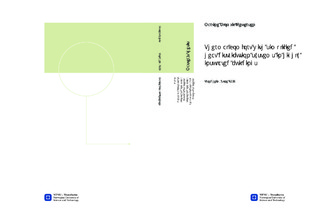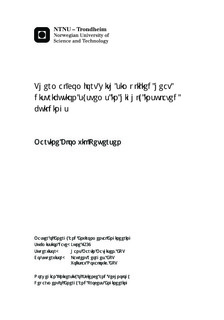| dc.contributor.advisor | Mathisen, Hans Martin | nb_NO |
| dc.contributor.advisor | Georges, Laurent | nb_NO |
| dc.contributor.advisor | Novakovic, Vojislav | nb_NO |
| dc.contributor.author | Pettersen, Martine Blomvik | nb_NO |
| dc.date.accessioned | 2014-12-19T13:55:28Z | |
| dc.date.available | 2014-12-19T13:55:28Z | |
| dc.date.created | 2014-09-11 | nb_NO |
| dc.date.issued | 2014 | nb_NO |
| dc.identifier | 746084 | nb_NO |
| dc.identifier | ntnudaim:11333 | nb_NO |
| dc.identifier.uri | http://hdl.handle.net/11250/257855 | |
| dc.description.abstract | The increasing energy consumption and its consequences have led to a major need for energy saving measures. Therefore, the passive house concept has been introduced. Passive houses have a low heating demand, so that it is theoretically possible to simplify the space heating distribution system by for example reduce the number of radiators. It has therefore been investigated if one central heat source can give sufficient thermal comfort in a whole housing unit.Research shows, with the use of simulations for Belgian climate, that thermal comfort can be obtained in the whole dwelling if the internal doors are open. Thus, the air flows through these doors are central for the thermal comfort in passive houses. Different analytical models for the calculation of velocity and volume flows through large vertical openings are therefore presented and compared. These models, and thus the simulations are based on a set of assumptions which are assessed. Measurements were conducted to investigate if the assumptions are valid and if thermal comfort can be achieved in a real situation. First, laboratory measurements were conducted to see if the planned setup functioned. Then measurements were conducted in an actual passive house; velocity and temperature were measured in a doorway and the air and surface temperatures were measured on both sides of the aperture. Three different heat sources were used and placed in four different positions where one position was on the first floor. There were several factors in the passive house that can have affected the results; the measurements were done in a staircase, a frame was built around the stairs and the measurement equipment all had margins of error.The measurements gave a velocity profile which deviated some from the theory. While investigating this it was found that many of the central assumptions were invalid. The temperatures in the thermal zones were neither uniform nor with small and similar temperature gradients; the temperatures varied in both zones and the thermal gradients differed for the two rooms and could not be considered small. The results imply that there is heat transfer between the two air streams in the aperture which contradicts the assumption of this not being the case. The passive house also has a ventilation system while the theoretical models assume that there is no supply of ventilation air. The consequence of these assumptions being invalid is that the velocity profile is changed from a symmetric, parabolic shape to a non-symmetric, non-parabolic shape. The position of the neutral plane was also found to be affected by the supplied ventilation air rate. One central assumption was found to be valid; the results showed that there was one neutral plane in the middle of the aperture. The volume flows were calculated based on the measured velocities and neither the velocities nor the volume flows was equal to the analytical calculated values. Thus, it is concluded that the analytical models cannot be used to find exact values for velocity and volume flows. However, the majority of the models can be used to find indications for these magnitudes, especially for the volume flows. The discharge coefficient Cd was found to be varying so that one value cannot be used for all cases.The deviations from the theory were more evident for the cases with the heat sources located upstairs as the velocity profile and temperature distribution in the aperture differed from the other cases. The neutral plane was located higher up in the aperture and thus none of the central assumptions are valid. The theoretical models are therefore found inapplicable when the heat source is located above the aperture.Even though the measurement results do not match the theory completely there were no problems with the thermal comfort in the house during the measurement period. The settings for the heat sources are found to be important for the thermal comfort. | nb_NO |
| dc.language | eng | nb_NO |
| dc.publisher | Institutt for energi- og prosessteknikk | nb_NO |
| dc.title | Thermal comfort with simplified heat distribution systems in highly insulated buildings | nb_NO |
| dc.type | Master thesis | nb_NO |
| dc.source.pagenumber | 181 | nb_NO |
| dc.contributor.department | Norges teknisk-naturvitenskapelige universitet, Fakultet for informasjonsteknologi, matematikk og elektroteknikk, Institutt for elkraftteknikk | nb_NO |

